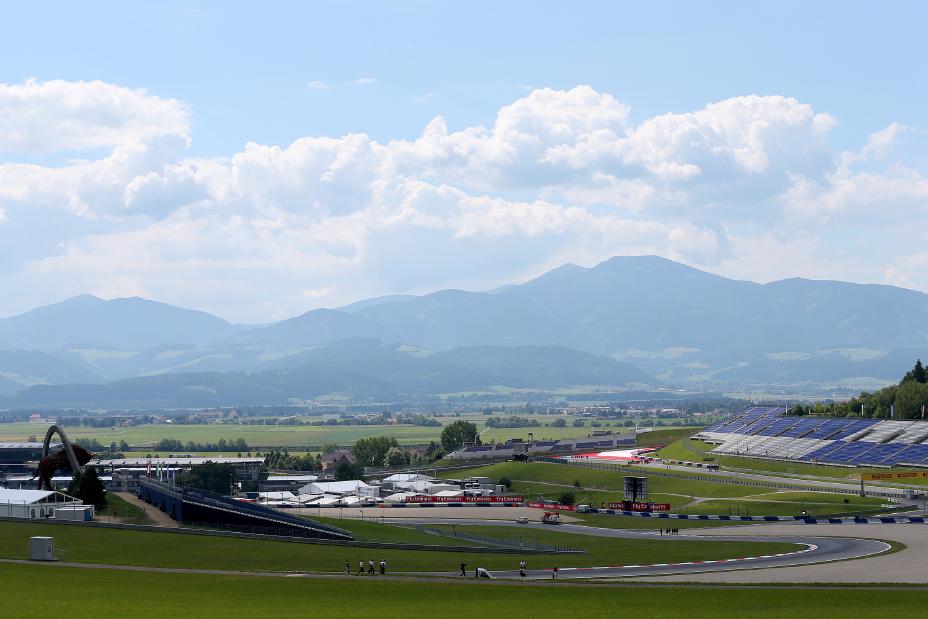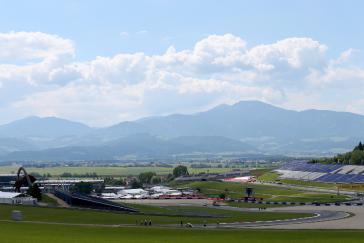SPIELBERG, Styria, Austria – A home race is special for any team, but for INFINITI Red Bull Racing, our first grand prix at the Red Bull Ring is just about as special as they come.
Being based in Milton Keynes, just a few miles from Silverstone, we've always regarded the British Grand Prix as our local race, but like many other teams based in Motorsport Valley, we have slightly divided loyalties. Our racing license is Austrian and so the Austrian Grand Prix is a homecoming for us.
Red Bull Racing first competed in the 2005 season, two years after the final Austrian Grand Prix of the previous era, so we've never before had the opportunity to go racing on our own turf. It's great to be going there this year as the reigning World Champions – but even nicer to go there having won the Canadian Grand Prix two weeks ago.
Watch YouTube Video on the Red Bull Racing.Opens in a new tab.
The track layout will be familiar to those drivers who competed in the Austrian Grand Prix between 1997 and 200, but the surroundings might not be so recognizable. After the last grand prix held at the circuit, the pit buildings were demolished and the track fell into disuse. Red Bull bought the circuit and began an ambitious rebuilding program, opening the upgraded, revamped Red Bull Ring in 2011. Since then the circuit has hosted DTM, Formula 3, Formula 3 and the World Series by Renault – and now, the big one.
The region around Spielberg and nearby Zeltweg has a long history with Formula One. The first World Championship Austrian Grand Prix was held on a circuit at Zeltweg Airfield in 1964, following a non-championship race at the same venue a year earlier. The grand prix, won by Lorenzo Bandinii for Ferrari, was a great success but the circuit was too narrow and too bumpy to be a long-term home for the grand prix.
And so, after 1964, the Austrian Grand Prix disappeared back into the wilderness, only returning in 1970 when the purpose-built Österreichring opened in Spielberg. The circuit was an instant classic, one of the fastest tracks in F1, and it ensured the Austrian Grand Prix became a fixture of the F1 calendar for the next 18 years.
Watch YouTube Video on the Red Bull Racing.Opens in a new tab.
The crowd who turned up in 1970 to cheer on Jochen Rindt were disappointed when their man, after taking pole and leading the race, was forced to retire when his Lotus 72 developed engine trouble, leaving the way clear for Jacky Ickx to take victory. Tragically, it would be Rindt's final grand prix.
Niki Lauda became the new local hero and took three pole positions for Ferrari in the mid-1970s but couldn't convert any of them into a victory. Niki finally gave the crowd what they wanted, winning the race in 1984 on his way to a third world title.
But being one of the fastest tracks in F1 also went hand-in-hand with being one of the most dangerous. That coupled with local complaints about noise saw the circuit disappear from the calendar after Nigel Mansell won the 1987 Austrian Grand Prix.
Austrian racers weren't about to let their race go so easily, however, and thanks in large part to the efforts of Franz and Alex Wurz, the circuit was resurrected in its current layout and back on the F1 calendar in 1997. It was, incidentally, Hermann Tilke's first go at creating an F1 circuit.
The new circuit was much shorter than its predecessor and had its shape largely dictated by legal wrangling, but it retained a series of high-speed corners that demanded total commitment from drivers. Jacque Villeneuve won the first grand prix on the new track on his way to the 1997 World Championship. He was followed in successive years by Mika Häkkinen, Eddie Irvine, Häkkinen again, David Coulthard, and finally Michael Schumacher in 2002 and 2003. The 2002 race was infamous for Schumacher being booed on the podium, taking the checkered flag after Rubens Barrichello took one for the team by following the instruction to cede the position to his fellow Ferrari driver. In 2003 it was a more straightforward affair with Schumacher winning from pole position and setting a fastest lap of 1:08.337 that still stands as the lap record. Will it fall this weekend? It's within the realms of possibility.
Before the race, however, we'll have a chance to sample a flavor of Austrian racing heritage with a Legends Parade featuring a host of Austrian F1 drivers in their original equipment. We'll see Christian Klien jumping back into the Red Bull RB2, and Dr. Helmut Marko will be turning back the clock in his BRM P160b while Karl Wendlinger will be in 1995's Red Bull Sauber C14. Niki Lauda will be driving his Ferrari 312T2 and Gerhard Berger the Ferrari 88C. (Gerhard's car has already been out on the track, however. The 10-time grand prix winner did a few laps for the cameras recently before swapping with Sebastian Vettel and having a go in the double-championship winning RB8 while Seb got a taste of old-school turbo power.)
Red Bull Shop have also launched a special edition Spielberg Collection merchandise range.
But that's all in the future. Today it's quiet at the track as we set up – thought that will change shortly. The race is a sell out, the atmosphere will be electric and we couldn't be more excited to have F1 back in Austria.
# # #






















































